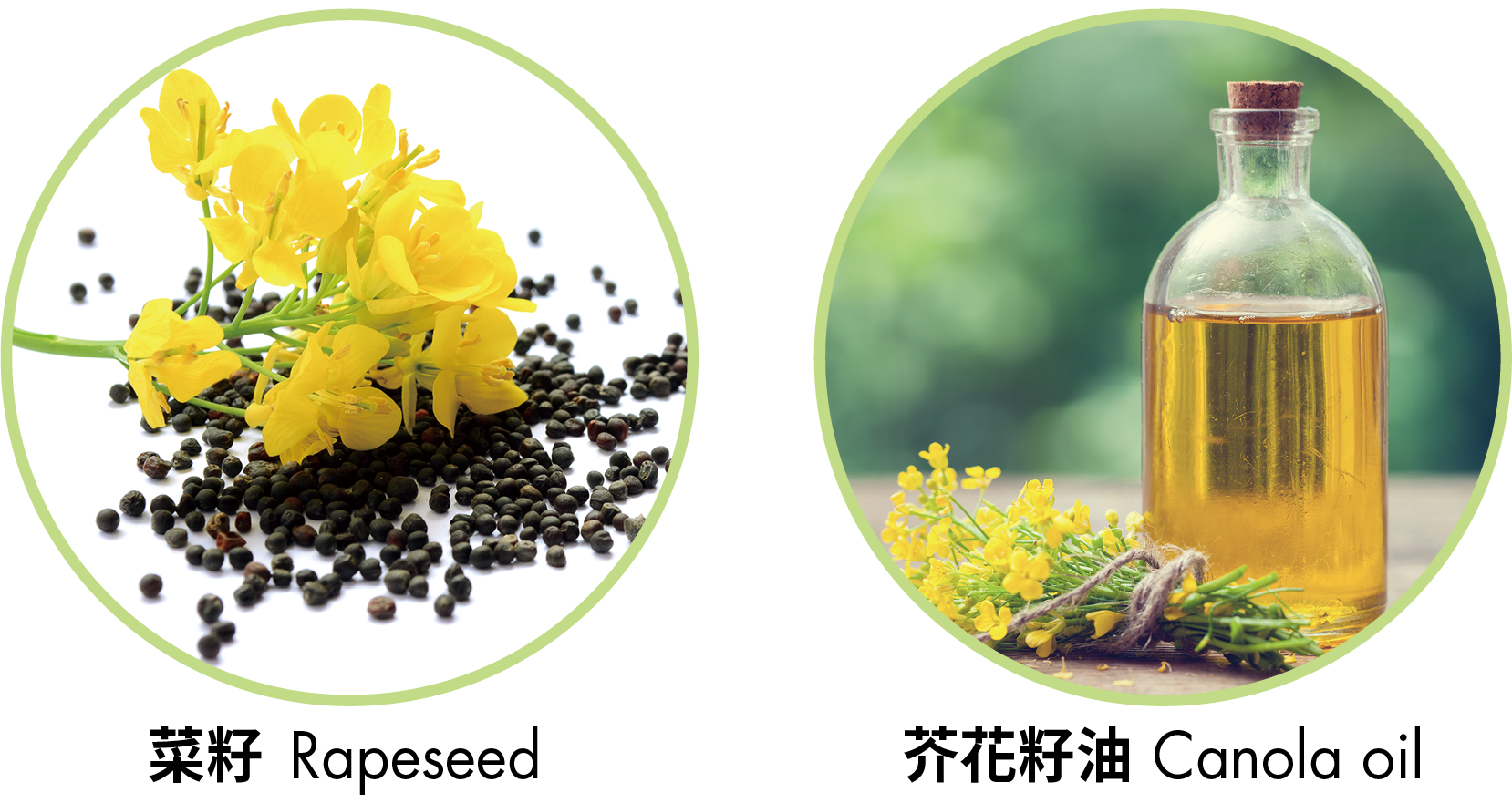
Food Safety Focus (162nd Issue, January 2020) – Food Safety Platform
Erucic Acid in Edible Fats and Oils
Reported by Dr. Lily SUEN, Scientific Officer,
Risk Assessment Section, Centre for Food Safety
In the last issue, we looked into benzo[a]pyrene (B[a]P), one of the potential contaminants formed in edible fats and oils during the production process. This time, we will focus on erucic acid, a naturally occurring chemical which may also cause potential safety concern in our oils.

Figure 3. Canola oil is made from the plant developed from natural cross breeding of the rapeseed plant and has very low levels of erucic acid.
What is erucic acid and its potential safety concern?
Edible fats and oils are made up of different fatty acids, ranging from saturated fatty acids to monounsaturated and polyunsaturated ones. Erucic acid is one of the monounsaturated fatty acids, having a chain length of 22 carbon atoms with one double bond at the omega 9 position.
Erucic acid naturally occurs in oil-rich seeds of species of the mustard family (Brassicaceae). It is found primarily in rapeseed oil and mustard oil. Erucic acid can constitute about 30 – 60% of the total fatty acids of natural rapeseed and mustard seed. It has also been reported in some marine animal oils.
Unlike some other monounsaturated fatty acids which may reduce the risk of heart disease, experimental animal studies have shown that exposure to diets with oils containing excessive erucic acid may lead to adverse health effects, with the heart as the principal target organ. The most common effect in the experimental animals is myocardial lipidosis, an accumulation of lipids in heart muscle fibres that may reduce the contractile force of heart muscles. So far, no evidence that dietary exposure of erucic acid is correlated to myocardial lipidosis has been established yet in humans nevertheless.
In order to protect the public's health, local statutory requirements have already been in place to control the level of erucic acid in food. Currently in Hong Kong, all oil or fat and food to which oil or fat have been added shall not contain erucic acid with concentration greater than 5% of the total fatty acids.
Low erucic acid rapeseed oil
In response to the potential safety concerns associated with high levels of erucic acid in rapeseed, efforts have been made to produce cultivars with a low erucic acid trait.
Nowadays, rapeseed oils with low levels of erucic acid, including rape oil, colza oil and canola oil, are commercially available. They are produced from low erucic acid oil-bearing seeds of cultivated varieties derived from the Brassica napus L., Brassica rapa L. and Brassica juncea L. species. According to Codex, these oils contain erucic acid level less than 2% of the total fatty acids.
|
Canola oil The term “Canola” was derived from “Canadian oil, low acid”. It was developed through conventional cross breeding of the rapeseed plant (flowers are yellow with four petals) with unwanted traits removed. Once registered as a trademark in Canada in 1970s, canola has now been recognised and used internationally as a generic term for edible varieties of rapeseed with erucic acid less than 2% in the oil. (See Figure 3)
|
In fact, low erucic acid rapeseed oils contain low level of saturated fatty acids and has high proportion of unsaturated fatty acids. They can be considered as one of the healthier oils in our diet.


